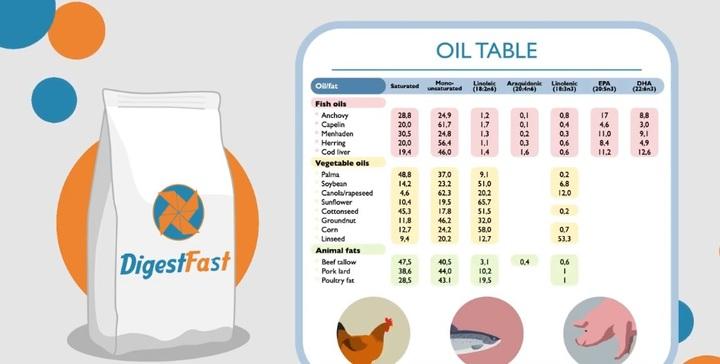Explore all the information on
Poultry vaccines
Disease prevention by vaccination is an integral part of flock health management protocols. Active immunization using live vaccines is the current industry standard. Routinely used vaccines in chickens include MDV, NDV, IBV, and IBDV, and in turkeys NDV and HEV. Newer vaccines, including molecular recombinants in which genes of immunogenic proteins from infectious agents are inserted into a live viral vector, are also being examined for commercial use. Efforts are under way to enhance vaccine efficacy by the use of adjuvants, particularly cytokines. The vaccine delivery systems include in ovo injection, aerosol, spray, drinking water, eye drop, and wing web injection. The in ovo vaccination procedure is relatively new and at the present time it is used primarily to vaccinate broiler chickens against MDV. Birds respond to vaccines by developing humoral and cellular immune responses. There are two main types of vaccine available for poultry: live or killed.
Avian influenza is a highly contagious disease that severely affects poultry production and food security. Several countries have developed vaccination programs to prevent and control avian influenza. Unlike currently available vaccines, modified live virus (MLV) vaccines have the potential to be easily mass-applied. Concerns of reversion, recombination, and unintended transmission have slowed the development of MLVs against avian influenza for use in poultry. To address these concerns, we...
Comments : 0
Recommendations: 0
Avian influenza virus (AIV) is a highly contagious and lethal disease that can have major impacts on the global poultry industry and food supply. While more frequent in Asia and Europe, highly pathogenic avian influenza virus (HPAIV) outbreaks have traditionally been rare in the U.S. However, in recent years, the U.S. has seen an increase in the incidence of HPAIV outbreaks in wild birds and commercial poultry. In 2014/2015 and in 2021/2022, outbreaks of HPAIV subtype H5NX clade 2.3.4.4...
Comments : 0
Recommendations: 0


Veterinary APIs Market Update: Price Trends & Key Insights – February 2025
Suggested link
Abstract Since Inclusion Body Hepatitis (IBH) was first detected in two broiler chicken flocks in the USA in 1963, outbreaks of the disease have been reported. Historically, IBH was known to occur as a secondary pathogen, particularly in the presence of immunosuppressive agents, but it´s no longer the case. During the late 1980´s and recently, IBH and Hydropericardium Syndrome (HHS) have been widely distributed in broiler flocks in several countries and...
Comments : 0
Recommendations: 0
The WVEPAH training program is designed for veterinarians and poultry professionals who wish to consolidate and refine their knowledge in areas such as pathology, nutrition, biosecurity, and epidemiology, among others. We are pleased to announce our upcoming course:
Module II: Commercial Layers at the prestigious Universidad Nacional...
Comments : 0
Recommendations: 2
The emergence of Highly Pathogenic Avian Influenza (HPAI) strains poses a significant threat to both avian populations and human health. Vaccination has been identified as a critical tool in mitigating the spread of HPAI. However, the acceptance and implementation of avian influenza vaccination programs have been met with opposition from various stakeholders, including poultry producers, public health authorities, and consumers. This abstract provides a comprehensive overview of the evolving...
Comments : 0
Recommendations: 1
Vaccination against avian influenza requires the assessment of multiple technical, legislative, and trade aspects related to its epidemiology and the country’s veterinary infrastructure, commerce policies, and interests. According to the World Organization of Animal Health (WOAH), vaccination against AI should not preclude a country from eligibility for trade as long as it can prove freedom from natural infection. Importing countries may have policies above the general guidelines...
Comments : 0
Recommendations: 0
I. INTRODUCTION The product tested is a purified yeast fraction which is highly concentrated in β-1.3/1.6 glucans (BG). β-1.3/1.6 glucans stimulate the immune system by triggering the Dectin-1 receptors located on the surface of phagocytes, stimulating a release of cytokines. Cytokines induce different immune pathways causing an immune response. When phagocytes that have previously been exposed to β-1.3/1.6 glucans, their immune responses toa pathogen is faster and...
Comments : 0
Recommendations: 3
I. INTRODUCTION To successfully develop a challenge model to simulate actual infection as seen in production practices, a seeder challenge model was proposed and previously shown to be an effective method to infect poultry (Cox et al., 1996, 2020). However, applying it in this way to young layers is novel. This pilot study was developed with the objective of determining the success of this challenge method. A second objective was to determine the base line effectiveness of the...
Comments : 0
Recommendations: 0
Newcastle Disease (ND) and Influenza A (IA) are major poultry diseases affecting both commercial and backyard poultry production worldwide1 . We conducted a Nepal’s first nationwide ND and IA prevalence study in 2018, collecting samples from both in commercial and backyard poultry farms. In commercial and backyard farms prevalence of ND was 70% and 17.5% respectively. We also determined the prevalence of IA in these farms (commercial= 27.5%, backyard= 7.5%). Genotype II was the most...
Comments : 0
Recommendations: 0
Javier Sanz Martín, shares with us his field experiences in autogenous vaccines and the role of EMAV....
Comments : 0
Recommendations: 0


Effects of Muco-defen® on Clostridium perfringens-induced necrotic enteritis in broilers
Suggested link
Javier Sanz Martín, mentions why we should use autogenous vaccines in poultry production....
Comments : 0
Recommendations: 1
Javier Sanz Martín, talks about the use of autogenous vaccines and European regulations....
Comments : 0
Recommendations: 1
.jpg&w=3840&q=75)

Jonathan Cade comments on his new role as Chairman of the U.S. Poultry & Egg Association
Suggested link
1. Introduction Infectious bronchitis (IB) and Newcastle disease (ND) are highly transmissible diseases that cause substantial economic losses in the poultry industry [1, 2]. Infectious bronchitis is caused by infectious bronchitis virus (IBV), a gammacoronavirus with a single-stranded positive sense RNA genome [3]. Newcastle disease is caused by virulent strains of Newcastle disease virus (NDV), a paramyxovirus with a single-stranded negative sense RNA genome [4]. Infectious...
Comments : 0
Recommendations: 0
Avian influenza was an exotic disease in Mexico until 1993 when the first H5N2 low-pathogenic avian influenza (LPAI) virus was identified. After many months of accumulating mutations, this low-pathogenic predecessor evolved into a highly pathogenic strain. This inevitably resulted in the authorities reporting the first H5N2 highly pathogenic avian influenza (HPAI) virus in 1994. To contain the HPAI virus, the government implemented a massive vaccination program, active surveillance,...
Comments : 0
Recommendations: 0
1. Introduction Infectious bronchitis (IB) and Newcastle disease (ND) are highly transmissible diseases that cause substantial economic losses in the poultry industry [1, 2]. Infectious bronchitis is caused by infectious bronchitis virus (IBV), a gammacoronavirus with a single-stranded positive sense RNA genome [3]. Newcastle disease is caused by virulent strains of Newcastle disease virus (NDV), a paramyxovirus with a single-stranded negative sense RNA genome [4]. Infectious...
Comments : 0
Recommendations: 1
Wevap, the new Calier tool, audits the vaccination process (LE). Auditing the vaccination process—from biosecurity measures and sample collection to vaccine preparation and application—is crucial for achieving the desired outcomes...
Comments : 0
Recommendations: 0
Auditing the vaccination process from the biosecurity measures that go through the taking of samples or the preparation and application of the vaccine, is key to obtaining the expected results.Wevap the new Calier tool to audit the vaccination process (LE)
...
Comments : 0
Recommendations: 1
Jim Sumner (Treasurer and former President of IPC) shares his experience on the International Poultry Council and the poultry industry, and comments on the challenges to face, in this Engormix interview....
Comments : 0
Recommendations: 0


Veterinary APIs Market Update: Price Trends & Key Insights – February 2025
Suggested link
Gérard Léveque (Global Manager Animal Health at Hendrix Genetics) talks about the main challenges in the poultry industry and how to better communicate advances in genetics, in this Engormix interview....
Comments : 0
Recommendations: 0
Respected Sir, I would be grateful if you explain me why is mean titer increase above the expected mean titer after vaccination of a breeder -45 wks old- could I consider that field challenge and repeat the vaccination ...
Comments : 0
Recommendations: 0





.jpg&w=3840&q=75)




























